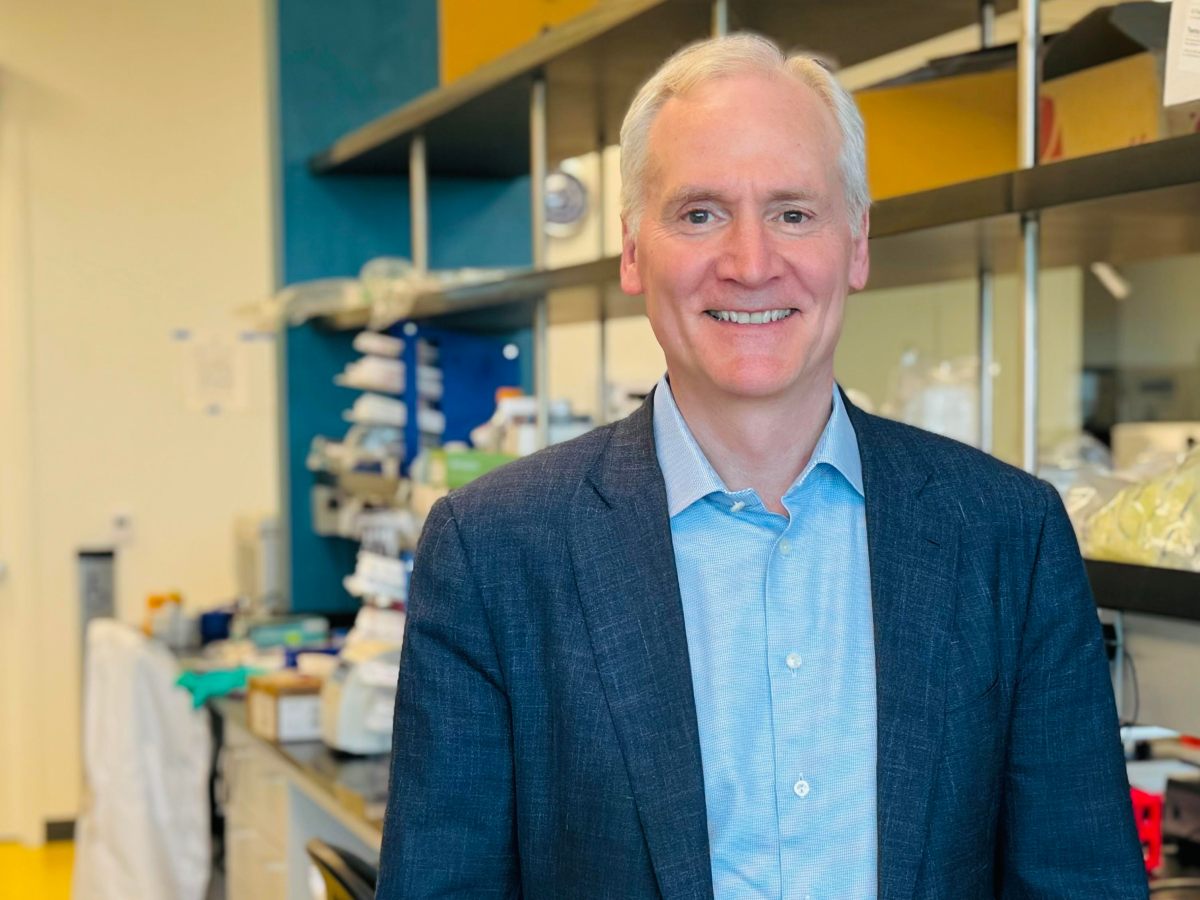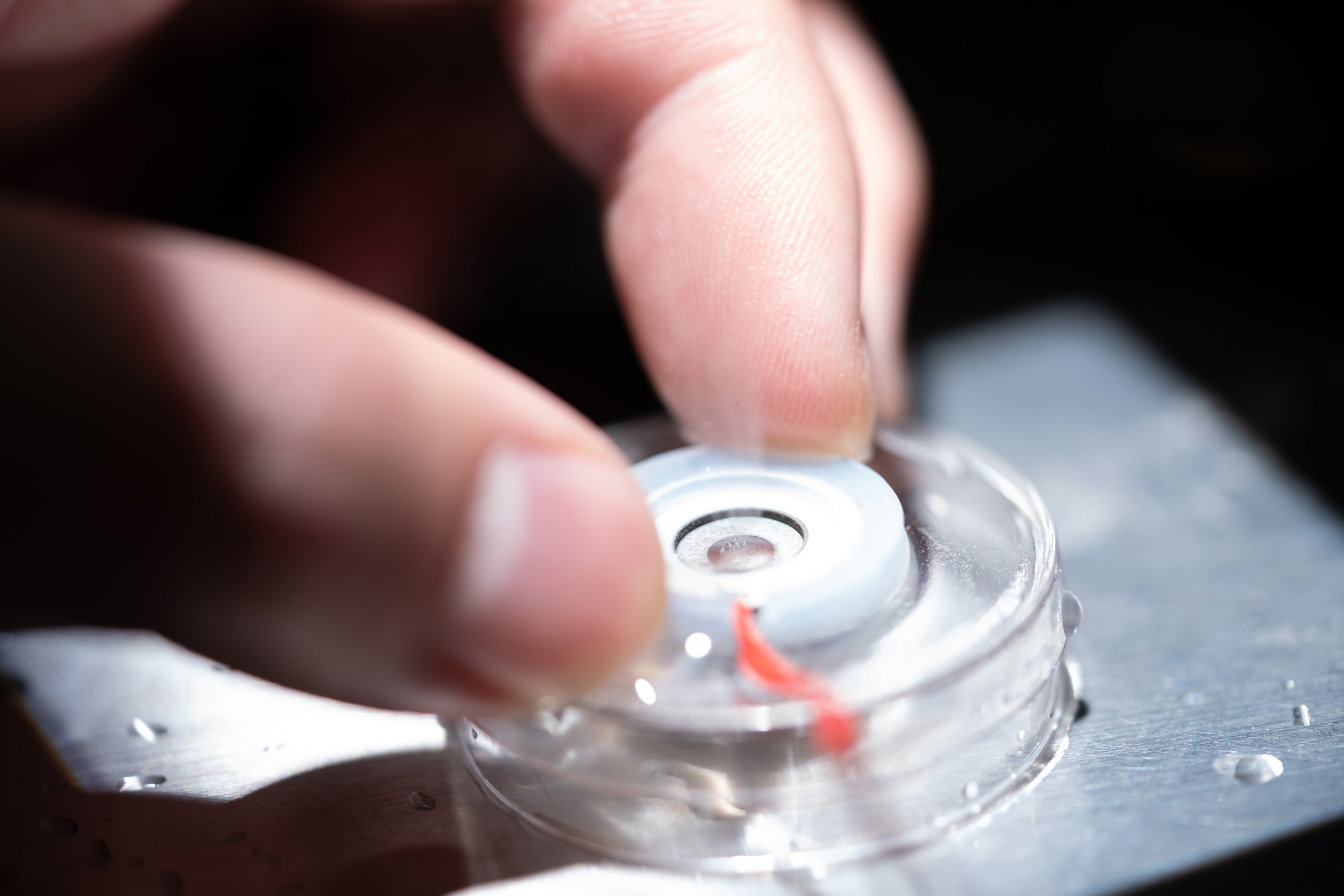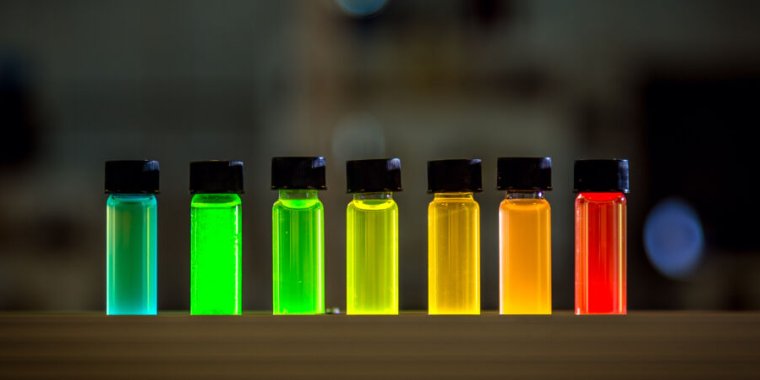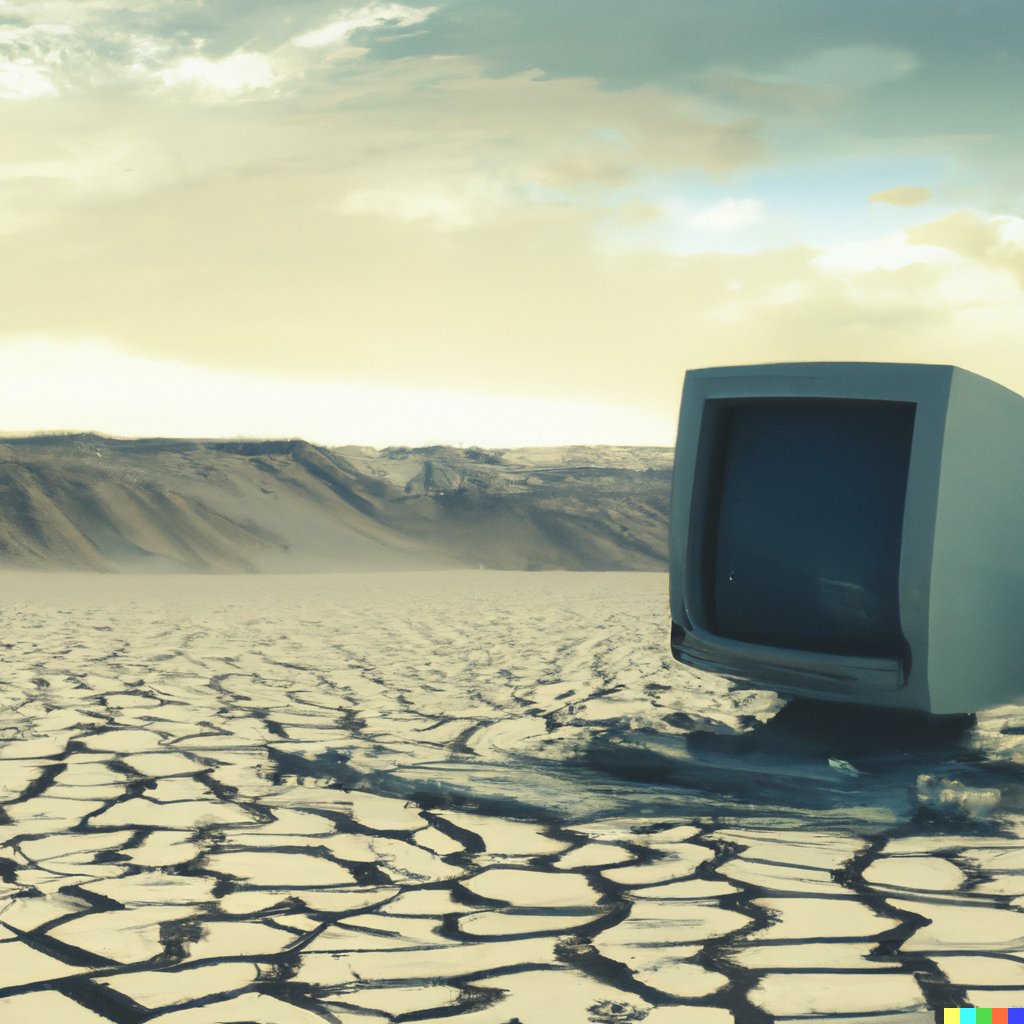 |
World's largest 3D printer. The University of Maine smashed the former Guinness World Record held by... the University of Maine. That's right, the previous world record was held by a previous version of the same 3D printer. The new one is 4x larger.
"The new printer, dubbed Factory of the Future 1.0 (FoF 1.0), was unveiled on April 23 at the Advanced Structures and Composites Center (ASCC) to an audience that included representatives from the US Department of Defense, US Department of Energy, the Maine State Housing Authority, industry partners and other stakeholders who plan to utilize this technology. The thermoplastic polymer printer is designed to print objects as large as 96 feet long by 32 feet wide by 18 feet high, and can print up to 500 pounds per hour. It offers new opportunities for eco-friendly and cost-effective manufacturing for numerous industries, including national security, affordable housing, bridge construction, ocean and wind energy technologies and maritime vessel fabrication. The design and fabrication of this world-first printer and hybrid manufacturing system was made possible with support from the Office of the Secretary of Defense through the US Army Corps of Engineers."
"FoF 1.0 isn't merely a large-scale printer; it dynamically switches between various processes such as large-scale additive manufacturing, subtractive manufacturing, continuous tape layup and robotic arm operations. Access to it and MasterPrint, the ASCC's first world-record breaking 3D printer, will streamline manufacturing innovation research at the center. The two large printers can collaborate by sharing the same end-effectors or by working on the same part."
"Continuous tape layup" refers to how fiberglass and carbon fiber composite components can be manufactured by unrolling a "tape" "pre-impregnated with adhesive resin". |
|
 |
X-Ray is a PDF file bad redaction detector. You can use it to remove redactions and reveal the original content -- if people do the redaction badly by drawing a black rectangle or a black highlight on top of black text.
But that's not the purpose of this tool. This tool isn't to help you, the PDF file reader -- it's to help the people who make the PDFs -- so they don't make mistakes and release badly redacted PDFs. If they use this tool, there will be nothing for you to reveal by using it. |
|
 |
WebLlama is "building agents that can browse the web by following instructions and talking to you".
This is one of those things that, if I had time, would be fun to try out. You have to download the model from HuggingFace & run it on your machine.
"The goal of our project is to build effective human-centric agents for browsing the web. We don't want to replace users, but equip them with powerful assistants."
"We are build on top of cutting edge libraries for training Llama agents on web navigation tasks. We will provide training scripts, optimized configs, and instructions for training cutting-edge Llamas."
If it works, this technology has a serious possible practical benefit for people with vision impairment who want to browse the web. |
|
 |
"Are large language models superhuman chemists?"
So what these researchers did was make a test -- a benchmark. They made a test of 7,059 chemistry questions, spanning the gamut of chemistry: computational chemistry, physical chemistry, materials science, macromolecular chemistry, electrochemistry, organic chemistry, general chemistry, analytical chemistry, chemical safety, and toxicology.
They recruited 41 chemistry experts to carefully validate their test.
They devised the test such that it could be evaluated in a completely automated manner. This meant relying on multiple-choice questions rather than open-ended questions more than they wanted to. The test has 6,202 multiple-choice questions and 857 open-ended questions (88% multiple-choice). The open-ended questions had to have parsers written to find numerical answers in the output in order to test them in an automated manner.
In addition, they ask the models to say how confident they are in their answers.
Before I tell you the ranking, the researchers write:
"On the one hand, our findings underline the impressive capabilities of LLMs in the chemical sciences: Leading models outperform domain experts in specific chemistry questions on many topics. On the other hand, there are still striking limitations. For very relevant topics the answers models provide are wrong. On top of that, many models are not able to reliably estimate their own limitations. Yet, the success of the models in our evaluations perhaps also reveals more about the limitations of the exams we use to evaluate models -- and chemistry -- than about the models themselves. For instance, while models perform well on many textbook questions, they struggle with questions that require some more reasoning. Given that the models outperformed the average human in our study, we need to rethink how we teach and examine chemistry. Critical reasoning is increasingly essential, and rote solving of problems or memorization of facts is a domain in which LLMs will continue to outperform humans."
"Our findings also highlight the nuanced trade-off between breadth and depth of evaluation frameworks. The analysis of model performance on different topics shows that models' performance varies widely across the subfields they are tested on. However, even within a topic, the performance of models can vary widely depending on the type of question and the reasoning required to answer it."
And with that, I'll tell you the rankings. You can log in to their website at ChemBench.org and see the leaderboard any time for the latest rankings. At this moment I am seeing:
gpt-4: 0.48
claude2: 0.29
GPT-3.5-Turbo: 0.26
gemini-pro: 0.25
mistral_8x7b: 0.24
text-davinci-003: 0.18
Perplexity 7B Chat: 0.18
galactica_120b: 0.15
Perplexity 7B online: 0.1
fb-llama-70b-chat: 0.05
The numbers that follow the model name are the score on the benchmark (higher is better). You'll notice there appears to be a gap between GPT-4 and Claude 2. One interesting thing about the leaderboard is you can show humans and AI models on the same leaderboard. When you do this, the top human has a score of 0.51 and beats GPT-4, then you get GPT-4, then you get a whole bunch of humans in between GPT-4 and Claude 2. So it appears that that gap is real. However, Claude 2 isn't the latest version of Claude. Since the evaluation, Claude 3 has come out, so maybe sometime in the upcoming months we'll see the leaderboard revised and see where Claude 3 comes in. |
|
 |
FutureSearch.AI lets you ask a language model questions about the future.
"What will happen to TikTok after Congress passed a bill on April 24, 2024 requiring it to delist or divest its US operations?"
"Will the US Department of Justice impose behavioral remedies on Apple for violation of antitrust law?"
"Will the US Supreme Court grant Trump immunity from prosecution in the 2024 Supreme Court Case: Trump v. United States?"
"Will the lawsuit brought against OpenAI by the New York Times result in OpenAI being allowed to continue using NYT data?"
"Will the US Supreme Court uphold emergency abortion care protections in the 2024 Supreme Court Case: Moyle v. United States?"
How does it work?
They say rather than asking a large language model a question in a 1-shot manner, they guide it through 6 steps for reasoning through hard questions. The 6 steps are:
1. "What is a basic summary of this situation?"
2. "Who are the important people involved, and what are their dispositions?"
3. "What are the key facets of the situation that will influence the outcome?"
4. "For each key facet, what's a simple model of the distribution of outcomes from past instances that share that facet?"
5. "How do I weigh the conflicting results of the models?"
6. "What's unique about this situation to adjust for in my final answer?"
See below for a discussion of two other approaches that claim similar prediction quality. |
|
 |
MyBestAITool: "The Best AI Tools Directory in 2024".
"Ranked by monthly visits as of April 2024".
"AI Chatbot": ChatGPT, Google Gemini, Claude AI, Poe.
"AI Search Engine": Perplexity AI, You, Phind, metaso.
"AI Photo & Image Generator": Leonardo, Midjourney, Fotor, Yodayo.
"AI Character": CharacterAI, JanitorAI, CrushonAI, SpicyChat AI.
"AI Writing Assistants": Grammarly, LanguageTool, Smodin, Obsidian.
"AI Photo & Image Editor": Remove.bg, Fotor, Pixlr, PhotoRoom.
"AI Model Training & Deployment": civitai, Huggingface, Replicate, google AI.
"AI LLM App Build & RAG": LangChain, Coze, MyShell, Anakin.
"AI Image Enhancer": Cutout Pro, AI Image Upscaler, ZMO.AI, VanceAI.
"AI Video Generator": Runway, Vidnoz, HeyGen, Fliki.
"AI Video Editor": InVideo, Media io, Opus Clip, Filmora Wondershare.
"AI Music Generator": Suno, Moises App, Jammable, LANDR.
No Udio? Really? Maybe it'll show up on next month's stats.
"AI 3D Model Generator": Luma AI, Recraft, Deepmotion, Meshy.
"AI Presentation Generator": Prezi AI, Gamma, Tome, Pitch.com.
"AI Design Assistant": Firefly Adobe, What font is, Hotpot, Vectorizer.
"AI Copywriting Tool": Simplified, Copy.ai, Jasper.ai, TextCortex.
"AI Story Writing": NovelAI, AI Novellist, Dreampress AI, Artflow.
"AI Paraphraser": QuillBot, StealthWriter, Paraphraser, Linguix.
"AI SEO Assistant": vidIQ, Writesonic, Content At Scale, AISEO.
"AI Email Assistant": Klaviyo, Instantly, Superhuman, Shortwave.
"AI Summarizer": Glarity, Eightify, Tactiq, Summarize Tech.
"AI Prompt Tool": FlowGPT, Lexica, PromptHero, AIPRM.
"AI PDF": ChatPDF, Scispace, UPDF, Ask Your PDF.
"AI Meeting Assistant": Otter, Notta, Fireflies, Transkriptor.
"AI Customer Service Assistant": Fin by Intercom, Lyro, Sapling, ChatBot.
"AI Resume Builder": Resume Worded, Resume Builder, Rezi, Resume Trick.
"AI Speech Recognition": Adobe Podcast, Transkriptor, Voicemaker, Assemblyai.
"AI Website Builder": B12.io, Durable AI Site Builder, Studio Design, WebWave AI.
"AI Art Generator": Leonardo, Midjourney, PixAI Art, NightCafe.
"AI Developer Tools": Replit, Blackbox, Weights & Biases, Codeium.
"AI Code Assistant": Blackbox, Phind, Codeium, Tabnine.
"AI Detector Tool": Turnitin, GPTZero, ZeroGPT, Originality.
You can view full lists on all of these and there are even more if you go through the categories on the left side.
No idea where they get their data? I would guess Comscore but they don't say. |
|
 |
"Xaira, an AI drug discovery startup, launches with a massive $1B, says it's 'ready' to start developing drugs."
$1 billion, holy moly, that's a lot.
"The advances in foundational models come from the University of Washington's Institute of Protein Design, run by David Baker, one of Xaira's co-founders. These models are similar to diffusion models that power image generators like OpenAI's DALL-E and Midjourney. But rather than creating art, Baker's models aim to design molecular structures that can be made in a three-dimensional, physical world." |
|
 |
"In a series of painstakingly precise experiments, a team of researchers at MIT has demonstrated that heat isn't alone in causing water to evaporate. Light, striking the water's surface where air and water meet, can break water molecules away and float them into the air, causing evaporation in the absence of any source of heat."
"The effect is strongest when light hits the water surface at an angle of 45 degrees. It is also strongest with a certain type of polarization, called transverse magnetic polarization. And it peaks in green light -- which, oddly, is the color for which water is most transparent and thus interacts the least."
They go on to say:
"The astonishing new discovery could help explain mysterious measurements over the years of how sunlight affects clouds, and therefore affect calculations of the effects of climate change on cloud cover and precipitation. It could also lead to new ways of designing industrial processes such as solar-powered desalination or drying of materials."
Does this effect from barely-absorbed visible light really have enough energy for high-performance water desalination driven by solar energy? The paper is paywalled so I guess I'll have to take them at their word. |
|
 |
"Installation Guide for DarkGPT Project".
"DarkGPT is an artificial intelligence assistant based on GPT-4-200K designed to perform queries on leaked databases. This guide will help you set up and run the project on your local environment."
Eeep. |
|
 |
| Jean-Michel Jarre, famous electronic music composer from the 1980s, is the first passenger in KleinVision's flying car. In related news: the soundtrack to the YouTube video of Jean-Michel Jarre being the first passenger in KleinVision's flying car by: Jean-Michel Jarre. |
|
 |
| Robot dog with a flamethrower alrighty then. |
|
 |
| "A Tesla driver was arrested for vehicular homicide after he ran over a motorcyclist while driving using Autopilot without paying attention. The man, 56, had activated Tesla's Autopilot feature. He was using his phone when he heard a bang as his car lurched forward and crashed into the motorcycle in front of him, troopers wrote. The motorcyclist, 28-year-old Jeffrey Nissen, was sadly pronounced dead at the scene." |
|
 |
"Meet QDEL, the backlight-less display tech that could replace OLED in premium TVs."
"The next step could be QDEL, short for 'quantum dot electroluminescent,' also known as NanoLED, screens. Not to be confused with the QLED (quantum light emitting diode) tech already available in TVs, QDEL displays don't have a backlight. Instead, the quantum dots are the light source. The expected result is displays with wider color spaces than today's QD-OLEDs (quantum dot OLEDs) that are also brighter, more affordable, and resistant to burn-in."
The article is sparse on details on how this technology might work.
"Quantum dots" are, from what I can tell, a fancy term for "nanoparticles" that emit light when they are stimulated. They are typically made from cadmium, indium, or zinc compounds, and now perovskites, those compounds we've been hearing about in the context of solar energy panels. The color of light they emit is related to their size, with 5 to 6 nanometer (nm) quantum dots emitting reds and oranges, while smaller quantum dots, in the 2-3 nm range, make your shorter-wavelength greens and blues.
The article says they don't require a backlight, but from what I understand, there does need to be an energy source that gets the quantum dot nanoparticles into an excited state for them to release photos at the intended wavelengths. So there needs to be a UV or deep blue "backlight" powering the quantum dots. But it's not a backlight in the conventional sense, which is a light source that gets reduced by a filtering layer, and what you see is the light from the backlight minus the light removed to make your TV image.
The quantum dots usually have a 2-layer "core" and "shell" structure. The inner "core" is the primary generator of the emitted light. The outer "shell" layer exists primarily to keep the quantum dots from sticking together ("aggregation") and to get them to disperse. However, the outer "shell" layer can also "fine tune" the color of the emitted light.
What is the point of all this? Greater brightness, greater dynamic range, more vivid colors, and greater longevity with long-term use. |
|
 |
Plastics. We think so much about the exponential growth of computer technology that we forget about other things growing exponentially.
It's like that line from the 1967 movie, "I just want to say one word to you... just one word: Plastics."
We may be paying more attention to computers, but plastics haven't gone away. They've kept growing exponentially.
I'm going to quote a boatload of stuff from this PlastChem report, but, in actuality it's going to look like a lot but in reality it's about 2 pages from an 87-page report. Actually once you add in all the appendices it's a 181-page report. And I'm going to quote these parts rather than summarize because I can't think of a way to compress this down much further, so since I can't do a better job of it myself I'm just going to present the choice quotes from the report. Here we go:
"The plastics economy is one of the largest worldwide. The global plastic market was valued at 593 billion USD in 2021. In the same year, the global trade value of plastic products was 1.2 trillion USD or 369 million metric tons, China, the USA, and European states are the major plastic-producing countries with emerging economies experiencing a rapid expansion of local production capacities. The plastics economy is tightly embedded in the petrochemical sector, consuming 90% of its outputs to make plastics. This, in turn, creates strong linkages with the fossil industry, as 99% of plastic is derived from fossil carbon, production mostly relies on fossil energy, and the plastic and fossil industries are economically and infrastructurally integrated."
"Plastic production increases exponentially. The global production of plastics has doubled from 234 million tons in 2000 to 460 million tons in 2019 and its demand grows faster that cement and steel. On average, production grew by 8.5% per year from 1950-2019. Business-as-usual scenarios project that plastic production will triple from 2019 to 2060 with a growth rate of 2.5-4.6% per year, reaching 1230 million tons in 2060. By 2060, 40 billion tons of plastic will have been produced, with about 6 billion tons currently present on Earth."
"The projected increase in plastic use is driven by economic growth and digitalization across regions and sectors. China is expected to remain the largest plastic user, but plastic demand is expected to grow stronger in fast-growing regions, such as Sub-Saharan Africa, India, and other Asian countries. Plastic use is projected to increase substantially across all sectors until 2060, and polymer types used in applications for packaging, construction and transportation make up the largest share of the projected growth.14 Importantly, the OECD predicts that petroleumbased, non-recycled plastics will continue to dominate the market in 2060. Single-use plastics, currently 35-40% of global production, are expected to grow despite regional phase-outs."
"Globally, seven commodity polymers dominate the plastics market. These include polypropylene (PP, 19% of global production), low-density polyethylene (LDPE, 14%), polyvinylchloride (PVC, 13%), high-density polyethylene (HDPE, 13%), polyethylene terephthalate (PET, 6%), polyurethane (PUR, 6%), and polystyrene (PS, 5%). Over 80% of Europe's total polymer demand is met by these, mostly in virgin form). Their usage varies by sector, with HDPE, LDPE, PET, and PP mainly being applied for packaging, and PS and PVC in construction."
"Plastic waste generation is expected to almost triple by 2060. In line with the growth in plastic use, the future plastic waste generation is projected to almost triple, reaching 1014 million tons in 2060. Waste generated from short-lived applications, including packaging, consumer products and textiles, and plastic used in construction are expected to dominate. The latter is relevant because long-lived applications will continue to produce 'locked-in' plastic waste well into the next century. Despite some improvements in waste management and recycling, the OECD projects that the amount of mismanaged plastic waste will continue to grow substantially and almost double to 153 million tons by 2060."
"The scale of plastic pollution is immense. The OECD estimates that 22 million tons of plastic were emitted to the environment in 2019 alone.14 While there are uncertainties in these estimates, they illustrate the substantial leakage of plastics into nature. Accordingly, approximately 140 million tons of plastic have accumulated in aquatic ecosystems until 2019. Emissions to terrestrial systems amount to 13 million tons per year (2019), but the accumulating stocks remain unquantified due to data gaps. While mismanaged waste contributes 82% to these plastic emissions, substantial leakages originate further upstream and throughout the plastic life cycle, such as from the release of micro- and nanoplastics. While the latter represent a relatively small share in terms of tonnage, the number of these particles outsizes that of larger plastic items emitted to nature."
"Plastic pollution is projected to triple in 2060. A business-as-usual scenario with some improvement in waste management and recycling predicts that the annual plastic emissions will double to 44 million tons in 2060. This is in line with other projections which estimate annual emissions of 53-90 million tons by 2030 and 34-55 million tons by 2040 to aquatic environments. According to the OECD, the accumulated stocks of plastics in nature would more than triple in 2060 to an estimated amount of 493 million tons, including the marine environment (145 million tons, 5-fold increase) and freshwater ecosystems (348 million tons, 3-fold increase). Since the impacts of plastic pollution are diverse and occur across the life cycle of plastics, the OECD concludes that 'plastic leakage is a major environmental problem and is getting worse over time. The urgency with which policymakers and other societal decision makers must act is high.'"
"Plastic monomers (e.g., ethylene, propylene, styrene) are mainly derived from fossil resources and then reacted (or, polymerized) to produce polymers (e.g., polyethylene, polypropylene, and polystyrene) that form the backbone of a plastic material. A mixture of starting substances (i.e., monomers, catalysts, and processing aids) is typically used in polymerization reactions. To produce plastic materials, other chemicals, such as stabilizers, are then added. This creates the so-called bulk polymer, usually in the form of pre-production pellets or powders. The bulk polymer is then processed into plastic products by compounding and forming steps, like extrusion and blow molding. Again, other chemicals are added to achieve the desired properties of plastic products, in particular additives. Importantly, such additives were crucial to create marketable materials in the initial development of plastics, and a considerable scientific effort was needed to stabilize early plastics. Throughout this process, processing aids are used to facilitate the production of plastics."
"At the dawn of the plastic age, scientists were unaware of the toxicological and environmental impacts of using additives in plastics. Their work to make plastic durable is essentially what has made plastics both highly useful, but also persistent and toxic."
"The growth in additives production mirrors that of plastics. The amount of additives in plastics can significantly vary, ranging from 0.05-70% of the plastic weight. For example, antioxidants in PE, PS, and ABS (acrylonitrile butadiene styrene) account for 0.5-3% of their weight. Light/UV stabilizers in PE, PP, and PVC constitute 0.1-10% by weight. Flame retardants can make up 2-28% of the weight, while plasticizers in PVC can be as high as 70% by weight. About 6 million tons of additives have been produced in 2016 and the annual growth rate is 4% in the additives sector. Accordingly, additive production can be expected to increase by 130-280 thousand tons per year. By 2060, the joint production volume of a range of additive classes is the projected to increase by a factor of five, closely mirroring the growth in overall plastic production."
"Plastics also contain non-intentionally added substances. Non-intentionally added substances include impurities, degradation products, or compounds formed during the manufacturing process of plastics, which are not deliberately included in the material. Examples include degradation products of known additives (e.g., alkylphenols from antioxidants) and polymers (e.g., styrene oligomers derived from polystyrene). Unlike intentionally added substances (IAS), which are in principle known and therefore can be assessed and regulated, non-intentionally added substances are often complex and unpredictable. Thus, their identity remains mostly unknown and these compounds, though present in and released from all plastics, cannot easily be analyzed, assessed, and regulated. Despite these knowledge gaps, non-intentionally added substances probably represent a major fraction of plastic chemicals."
"The number and diversity of known plastic chemicals is immense. A recent analysis by the United Nations Environment Programme suggests that there are more than 13 000 known plastic chemicals, including polymers, starting substances, processing aids, additives, and non-intentionally added substances. The main reason for such chemical complexity of plastics is the highly fragmented nature of plastic value chains that market almost 100 000 plastic formulations and more than 30 000 additives, 16,000 pigments, and 8000 monomers. While this represents the number of commercially available constituents of plastics, not necessarily the number of unique plastic chemicals, it highlights that the diversity of the plastics sector creates substantial complexity in terms of plastic chemicals."
"A full overview of which chemicals are present in and released from plastics is missing, mostly due to a lack of transparency and publicly available data. Nonetheless, the available scientific evidence demonstrates that most plastic chemicals that have been studied are indeed released from plastic materials and products via migration into liquids and solids (e.g., water, food, soils) and volatilization into air. Additional chemical emissions occur during feedstock extraction and plastic production as well as at the end-of-life (e.g., during incineration). This is problematic because upon release, these chemicals can contaminate natural and human environments which, in turn, results in an exposure of biota and humans."
"Most plastic chemicals can be released. The release of chemicals from plastics has been documented in a multitude of studies, especially in plastic food contact materials, that is, plastics used to store, process or package food. A systematic assessment of 470 scientific studies on plastic food packaging indicates that 1086 out of 1346 analyzed chemicals can migrate into food or food simulants under certain conditions. Accordingly, 81% of the investigated plastic chemicals are highly relevant for human exposure. Newer research with advanced methods to study previously unknown plastic chemicals illustrates that this probably represents the tip of the iceberg. Studies using so-called nontargeted or suspect screening approaches show that commonly more than 2000 chemicals leach from a single plastic product into water. While less information is available on non-food plastics, this highlights two important issues. Firstly, plastics can release a large number of chemicals which, secondly, then become relevant for the exposure of biota, including humans (termed 'exposure potential' in this report)."
"Many plastic chemicals are present in the environment. Upon release, plastic chemicals can enter the environment at every stage of the plastic life cycle. Accordingly, plastic chemicals are ubiquitous in the environment due to the global dispersal of plastic materials, products, waste, and debris. For instance, a recent meta-analysis suggests that more than 800 plastic chemicals have been analyzed in the environment. However, this evidence is fragmented, and a systematic assessment of which compounds have been detected in the environment is lacking. Yet, the evidence on well-studied plastic chemicals indicates that these are present in various environments and biota across the globe, including remote areas far away from known sources. Examples include many phthalates, organophosphate esters, bisphenols, novel brominated flame retardants, and benzotriazoles. Based on the existing evidence on well-researched compounds, it is prudent to assume that many more plastic chemicals are omnipresent in the natural and human environment, including in wildlife and humans."
"Humans are exposed to plastic chemicals across the entire life cycle of plastics. This ranges from the industrial emissions during production, affecting fence line communities, to the releases during use, affecting consumers, and at the end-of-life, including waste handling and incineration. These releases have resulted in extensive exposures of humans to plastic chemicals. For example, many phthalates, bisphenols, benzophenones, parabens, phenolic antioxidants as well as legacy brominated and organophosphate flame retardants have been detected in human blood, urine, and tissues in different global regions. Humans can be exposed to plastic chemicals directly, such as phthalates and other additives leaching from PVC blood bags used for transfusion or leaching into saliva in children mouthing plastic toys. Indirect exposure occurs through the ingestion of contaminated water and foodstuffs that have been in contact with plastics (e.g., processing, packaging). The inhalation and ingestion of plastic chemicals from air, dust and other particulate matter are other important routes of exposure. Importantly, research shows that women, children, and people in underprivileged communities often have higher levels of exposure."
"Non-human organisms are exposed to plastic chemicals. The scientific literature provides rich information on the exposure of wildlife to plastic chemicals, in particular on bisphenols and phthalates in terrestrial and aquatic ecosystems as well as persistent organic pollutants, and antioxidants in marine environments. The United Nations Environment Programme highlights a global biomonitoring study which showed that seabirds from all major oceans contain significant levels of brominated flame retardants and UV stabilizers, indicating widespread contamination even in remote areas. Beyond seabirds, various other species are exposed to plastic chemicals according to the United Nations Environment Programme, such as mussels and fish containing with high levels of hazardous chemicals like HBCDD (hexabromocyclododecane), bisphenol A, and PBDEs (polybrominated diphenyl ethers), suggesting plastics as a probable source. Land animals, including livestock, are exposed to chemicals from plastics, such as PBDEs in poultry and cattle. and phthalates in insects. Importantly, plastic chemicals can also accumulate plants, including those for human consumption. This highlights a significant cross-environmental exposure that spans from marine to terrestrial ecosystems and food systems. However, while research on plastic chemical in non-human biota is abundant, it remains fragmented and has not been systematically compiled and assesses thus far."
"Endocrine disrupting chemicals in plastics represent a major concern for human health. The plastic chemicals nonylphenol and bisphenol A were among the earliest identified compounds that interfere with the normal functioning of hormone systems. These findings marked the beginning of a broader recognition of the role of plastic chemicals in endocrine disruption and dozens have since been identified as endocrine disrupting chemicals. This includes several other bisphenols, phthalates (used as plasticizers), benzophenones (UV filters), and certain phenolic antioxidants, such as 2,4-ditertbutylphenol. For example, strong scientific evidence links bisphenols to cardiovascular diseases, diabetes, and obesity. Accordingly, there is a strong interconnection between plastic chemicals and endocrine disruption."
"Additional groups of plastic chemicals emerge as health concern. The Minderoo-Monaco Commission's recent report comprehensively assesses the health effects of plastics across the life cycle, including plastic chemicals. In addition to phthalates and bisphenols, the report highlights per- and polyfluoroalkyl substances (PFAS) widely utilized for their non-stick and water-repellent properties. PFAS are strongly associated with an increased risk of cancer, thyroid disease, and immune system effects, including reduced vaccine efficacy in children. Additional concerns pertain to their persistence and their tendency to bioaccumulate in humans. In addition, brominated and organophosphate flame retardants have been linked to neurodevelopmental effects and endocrine disruption, adversely affecting cognitive function and behavior in children, as well as thyroid and reproductive health. Several other plastic chemicals are known to cause harm to human health, for example because they are mutagens (e.g., formaldehyde) or carcinogens with other modes of action, like melamine."
"Plastic chemicals also impact human health when released from production and disposal sites. These more indirect effects include the contribution of plastic chemicals to water and air pollution across the life cycle. For instance, chlorofluorocarbons, previously used as blowing agents in plastic production, can deplete the stratospheric ozone layer and thereby indirectly affect human health. Other issues include the promotion of antimicrobial resistance due to the dispersion of biocides transferring from plastics in the environment and the release of dioxins and PCBs from the uncontrolled burning of plastic wastes. The latter are especially toxic and persistent, and accumulate in the food chain, leading to increased human exposure."
"The health impacts of well-researched plastic chemicals are established. Arguably, there is a large body of evidence that links certain groups of plastic chemicals to a range of adverse health effects. These include but is not limited to bisphenols, phthalates, PFAS, and brominated and organophosphate flame retardants. Research focusses particularly on their endocrine disrupting effects, include adverse impacts on reproduction, development, metabolism, and cognitive function. However, it should be noted that research into other groups of plastic chemicals and other types of health effects remains largely fragmented and has rarely been systematically assessed. Here, initiatives such as the Plastic Health Map75 can support a more strategic approach."
"Plastic chemicals exert a host of adverse impacts on wildlife. This includes both acute and chronic toxicity in individual organisms and populations, as well as indirect effects across food webs. Ecotoxicological effects of heavy metals, such as cadmium and lead, as well as endocrine disrupting chemicals used in plastics, such as bisphenols, phthalates, and brominated flame retardants, have received the most research attention to date. Oftentimes, these endocrine disrupting chemicals induce environmental impacts at very low concentrations."
Jumping to page 24 for "Key Findings" of Part II of the report, "What is known about plastic chemicals":
"There are at least 16,000 known plastic chemicals. The report identifies 16,325 compounds that are potentially used or unintentionally present in plastics."
"There is a global governance gap on plastic chemicals. 6% of all compounds are regulated internationally and there is no specific policy instrument for chemicals in plastics."
"Plastic chemicals are produced in volumes of over 9 billion tons per year. Almost 4000 compounds are high-production volume chemicals, each produced at more than 1000 tons per year."
"At least 6300 plastic chemicals have a high exposure potential. These compounds have evidence for their use or presence in plastics, including over 1500 compounds that are known to be released from plastic materials and products."
"Plastic chemicals are very diverse and serve multiple functions. In addition to well-known additives, such as plasticizers and antioxidants, many plastic chemicals often serve multiple functions, for instance, as colorants, processing aids, and fillers."
"Grouping of plastic chemicals based on their structures is feasible. Over 10,000 plastic chemicals are assigned to groups, including large groups of polymers, halogenated compounds, and organophosphates."
Jumping to page 28, they have a visualization of the number of different plastic chemicals by use category:
3674 Colorants
3028 Processing aids
1836 Fillers
1741 Intermediates
1687 Lubricants
1252 Biocides
959 Monomers
897 Crosslinkers
883 Plasticizers
862 Stabilizers
843 Odor agents
764 Light stabilizers
723 Catalysts
595 Antioxidants
478 Initiators
389 Flame retardants
215 Heat stabilizers
205 Antistatic agents
128 Viscosity modifiers
103 Blowing agents
83 Solvents
74 Other additives
56 NIASs (non-intentionally added substances)
47 Others
31 Impact modifiers
On page 30 they have a table that gives you numbers by chemical category (with many groups missing because apparently there is a "long tail" of categories with fewer than 10 members that they didn't bother to include):
802 Alkenes
443 Silanes, siloxanes, silicones
440 PFAS (per- and polyfluoroalkyl substances)
376 Alkanes
202 Carboxylic acids salts
140 PCBs (polychlorinated biphenyls)
124 Aldehydes simple
89 Azodyes
75 Dioxines and furans
66 Alkylphenols
61 Ortho-phthalates
52 Aceto- and benzophenones
50 Phenolic antioxidants
45 PAHs (polycyclic aromatic hydrocarbons)
34 Bisphenols
29 Iso/terephthalates and trimellitates
28 Benzotriazoles
25 Ketones simple
24 Benzothiazole
22 Aromatic amines
20 Alkynes
20 Alkane ethers
18 Chlorinated paraffins combined
15 Aliphatic ketones
14 Aliphatic primary amides
11 Salicylate esters
10 Parabens
10 Aromatic ethers
Page 57 has a table of the number of chemicals by category considered hazardous. Page 61 has a table of the number of chemicals considered hazardous by usage category instead of chemical structure.
Last section is policy recommendations.
The report is 87 pages, but the document is 181 pages. The rest is a series of appendices, which they call the "Annex", which has the glossary, abbreviations, and detailed findings for everything summarized in the rest of the report. |
|
 |
The end of classical computer science is coming, and most of us are dinosaurs waiting for the meteor to hit, says Matt Welsh.
"I came of age in the 1980s, programming personal computers like the Commodore VIC-20 and Apple IIe at home. Going on to study computer science in college and ultimately getting a PhD at Berkeley, the bulk of my professional training was rooted in what I will call 'classical' CS: programming, algorithms, data structures, systems, programming languages."
"When I was in college in the early '90s, we were still in the depth of the AI Winter, and AI as a field was likewise dominated by classical algorithms. In Dan Huttenlocher's PhD-level computer vision course in 1995 or so, we never once discussed anything resembling deep learning or neural networks -- it was all classical algorithms like Canny edge detection, optical flow, and Hausdorff distances."
"One thing that has not really changed is that computer science is taught as a discipline with data structures, algorithms, and programming at its core. I am going to be amazed if in 30 years, or even 10 years, we are still approaching CS in this way. Indeed, I think CS as a field is in for a pretty major upheaval that few of us are really prepared for."
"I believe that the conventional idea of 'writing a program' is headed for extinction, and indeed, for all but very specialized applications, most software, as we know it, will be replaced by AI systems that are trained rather than programmed."
"I'm not just talking about CoPilot replacing programmers. I'm talking about replacing the entire concept of writing programs with training models. In the future, CS students aren't going to need to learn such mundane skills as how to add a node to a binary tree or code in C++. That kind of education will be antiquated, like teaching engineering students how to use a slide rule."
"The shift in focus from programs to models should be obvious to anyone who has read any modern machine learning papers. These papers barely mention the code or systems underlying their innovations; the building blocks of AI systems are much higher-level abstractions like attention layers, tokenizers, and datasets."
This got me thinking: Over the last 20 years, I've been predicting AI would advance to the point where it could automate jobs, and it's looking more and more like I was fundamentally right about that, and all the people who poo-poo'd the idea over the years in coversations with me were wrong. But while I was right about that fundamental idea (and right that there wouldn't be "one AI in a box" that anyone could pull the plug on if something went wrong, but a diffusion of the technology around the world like every previous technology), I was wrong about how exactly it would play out.
First I was wrong about the timescales: I thought it would be necessary to understand much more about how the brain works, and to work algorithms derived from neuroscience into AI models, and looking at the rate of advancement in neuroscience I predicted AI wouldn't be in its current state for a long time. While broad concepts like "neuron" and "attention" have been incorporated into AI, there are practically no specific algorithms that have been ported from brains to AI systems.
Second, I was wrong about what order. I was wrong in thinking "routine" jobs would be automated first, and "creative" jobs last. It turns out that what matters is "mental" vs "physical". Computers can create visual art and music just by thinking very hard -- it's a purely "mental" activity, and computers can do all that thinking in bits and bytes.
This has led me to ponder: What occupations require the greatest level of manual dexterity?
Those should be the jobs safest from the AI revolution.
The first that came to mind for me -- when I was trying to think of jobs that require an extreme level of physical dexterity and pay very highly -- was "surgeon". So I now predict "surgeon" will be the last job to get automated. If you're giving career advice to a young person (or you are a young person), the advice to give is: become a surgeon.
Other occupations safe (for now) against automation, for the same reason would include "physical therapist", "dentist", "dental hygienist", "dental technician", "medical technician" (e.g. those people who customize prosthetics, orthodontic devices, and so on), and so on. "Nurse" who routinely does physical procedures like drawing blood.
Continuing in the same vein but going outside the medical field (pun not intended but allowed to stand once recognized), I'd put "electronics technician". I don't think robots will be able to solder any time soon, or manipulate very small components, at least after the initial assembly is completed which does seem to be highly amenable to automation. But once electronic components fail, to the extent it falls on people to repair them, rather than throw them out and replace them (which admittedly happens a lot), humans aren't going to be replaced any time soon.
Likewise "machinist" who works with small parts and tools.
"Engineer" ought to be ok -- as long as they're mechanical engineers or civil engineers. Software engineers are in the crosshairs. What matters is whether physical manipulation is part of the job.
"Construction worker" -- some jobs are high pay/high skill while others are low pay/low skill. Will be interesting to see what gets automated first and last in construction.
Other "trade" jobs like "plumber", "electrician", "welder" -- probably safe for a long time.
"Auto mechanic" -- probably one of the last jobs to be automated. The factory where the car is initially manufacturered, a very controlled environment, may be full of robots, but it's hard to see robots extending into the auto mechanic's shop where cars go when they break down.
"Jewler" ought to be a safe job for a long time. "Watchmaker" (or "watch repairer") -- I'm still amazed people pay so much for old-fashioned mechanical watches. I guess the point is to be pieces of jewlry, so these essentially count as "jewler" jobs.
"Tailor" and "dressmaker" and other jobs centered around sewing.
"Hairstylist" / "barber" -- you probably won't be trusting a robot with scissors close to your head any time soon.
"Chef", "baker", whatever the word is for "cake calligrapher". Years ago I thought we'd have automated kitchens at fast food restaurants by now but they are no where in sight. And nowhere near automating the kitchens of the fancy restaurants with the top chefs.
Finally, let's revisit "artist". While "artist" is in the crosshairs of AI, some "artist" jobs are actually physical -- such as "sculptor" and "glassblower". These might be resistant to AI for a long time. Not sure how many sculptors and glassblowers the economy can support, though. Might be tough if all the other artists stampede into those occupations.
While "musician" is totally in the crosshairs of AI, as we see, that applies only to musicians who make recorded music -- going "live" may be a way to escape the automation. No robots with the manual dexterity to play physical guitars, violins, etc, appear to be on the horizon. Maybe they can play drums?
And finally for my last item: "Magician" is another live entertainment career that requires a lot of manual dexterity and that ought to be hard for a robot to replicate. For those of you looking for a career in entertainment. Not sure how many magicians the economy can support, though. |
|
 |
The Federal Trade Commission banned 'non-compete' agreements, to take effect in August. But it was only a 3-2 vote, and business groups are going to sue to maintain their ability to have employees sign non-compete contracts.
According to the article, business groups say non-compete agreements "protect trade secrets" and "promote competitiveness," while the FTC says banning non-competes would "increase worker earnings by up to $488 billion over the next decade and will lead to the creation of more than 8,500 new businesses each year."
I wonder if that $488 billion can be realized over the next decade with artificial intelligence, not mentioned in the article, advancing so fast. Creation of 8,500 new businesses? The trend for decades is few businesses and more people working for large companies than small companies. I suppose you could blame non-compete agreements for that, in which case the claim that eliminating non-compete agreement creating new businesses would be true. Also when I hear "trade secrets," I think advanced technology, but the article claims Democrats claim non-compete agreements are used "even in lower-paying service industries such as fast food and retail." |
|